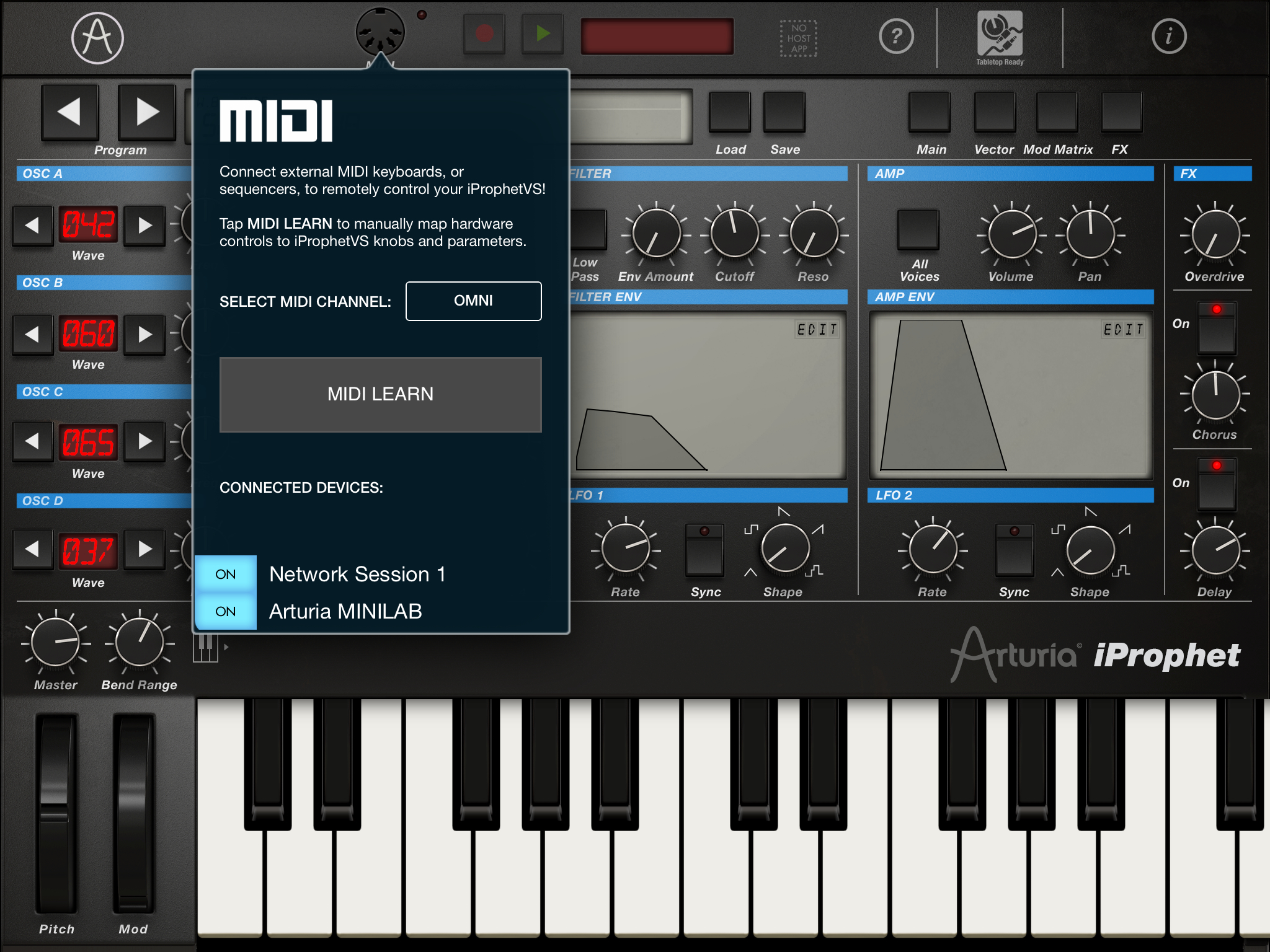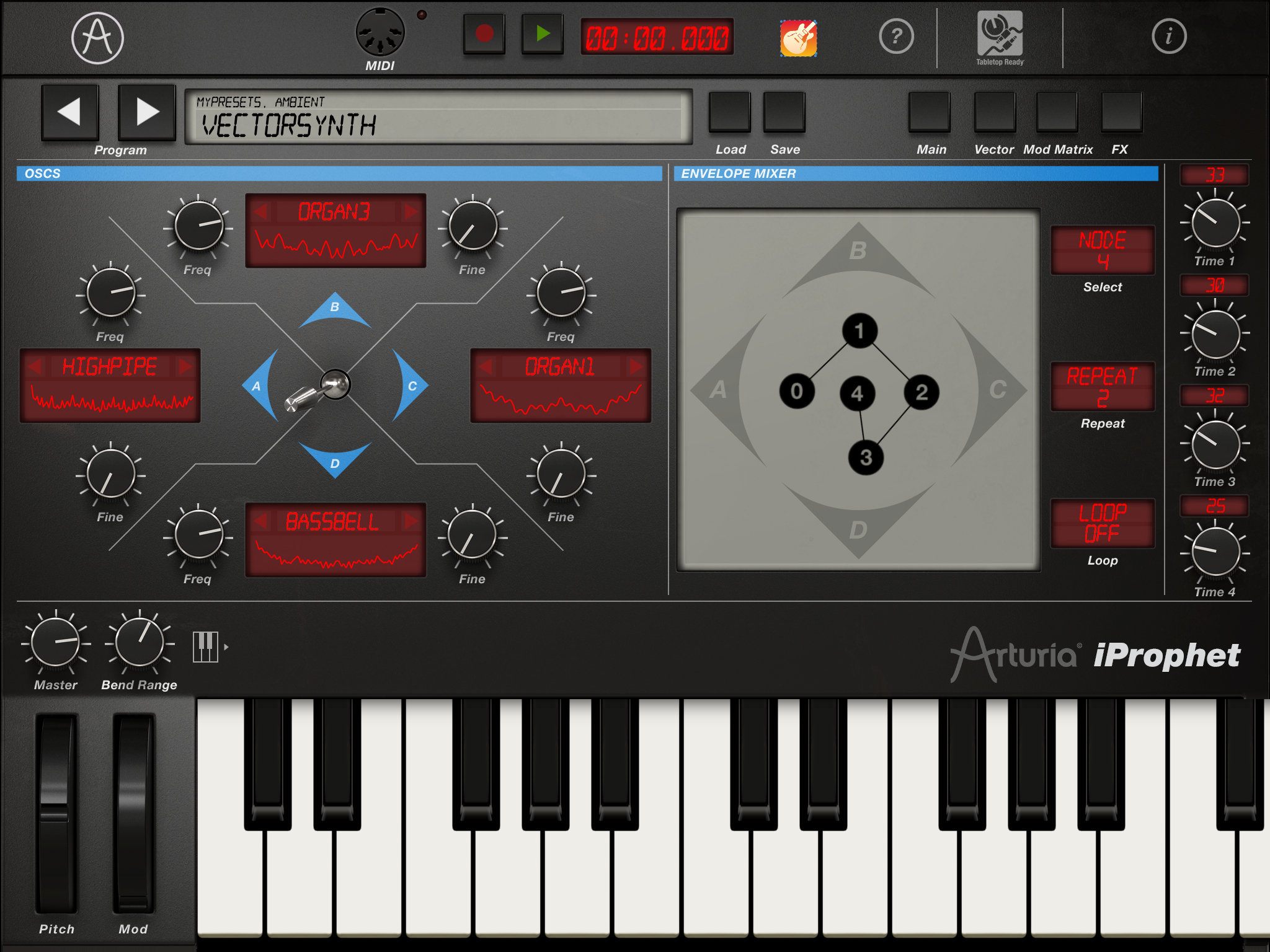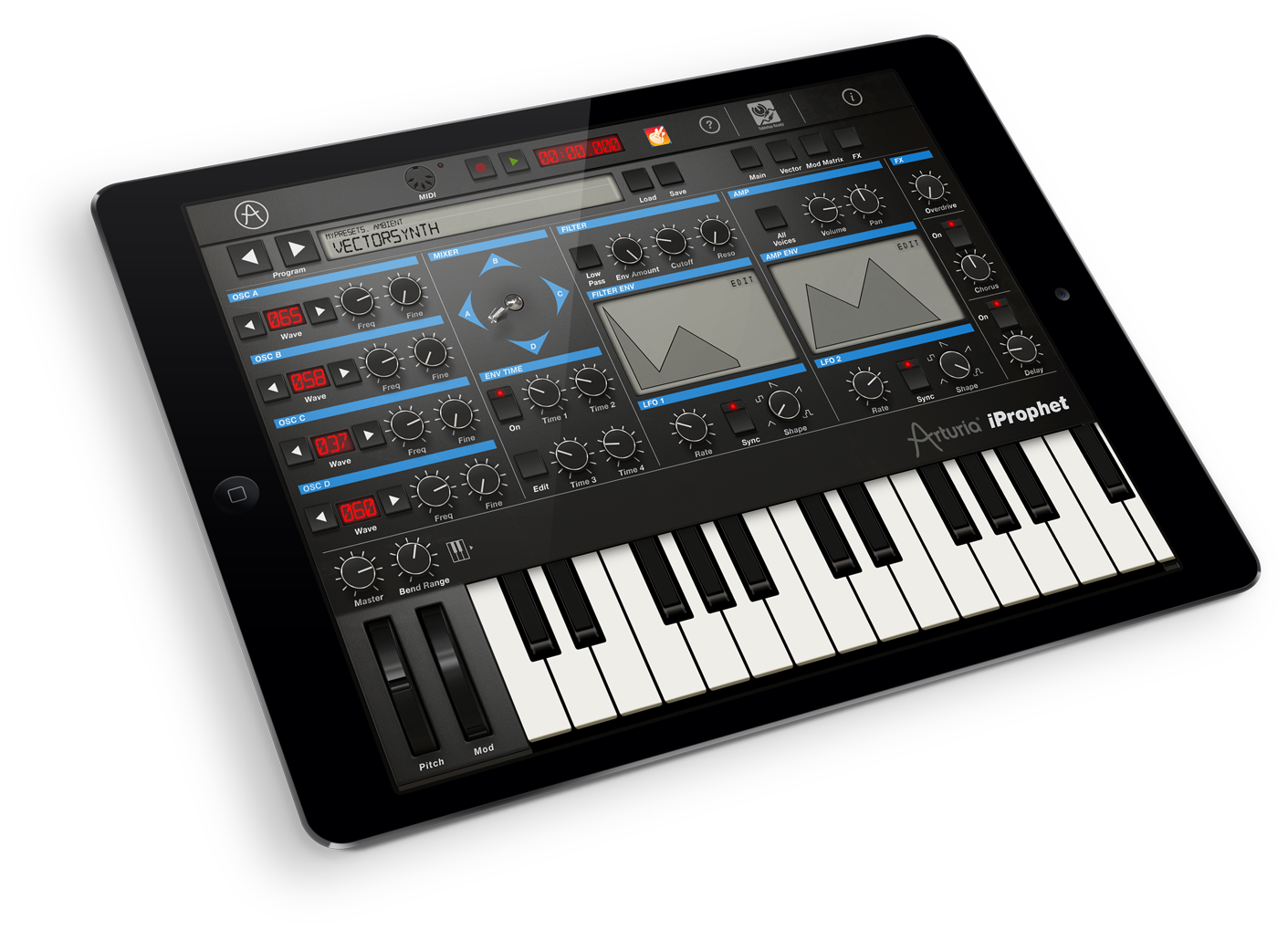
iProphet Vectors in on Past
Dave Smith’s synthesiser company Sequential Circuits was on the way out when employee Chris Meyer did some private detective work and uncovered the secret sauce behind PPG’s distinctive-sounding wavetable synthesis, which was the flavour at the time. The world of synthesis had been moving alarmingly quick, and Sequential was getting left behind. Thinking they could make a jump on the competition, Meyer thought adding an extra dimension to the waveform crossfading would outdo the Germans, and Vector Synthesis had arrived.
The Prophet VS was supposed to be Sequential’s saving grace, with all the bells and whistles: four oscillators per voice, 96 factory-preset waveforms, 32 user-definable waveshape locations and, of course, the inspired joystick-driven waveform crossfading. Four waveforms could be assigned to four oscillators and played like a video game.
It’s nice to see then that the Prophet VS emulation has been selected out of Arturia’s V Collection to get the iPad treatment, it’s become the iProphet. Vector synthesis was always intended to be dynamic, and the touch environment is the perfect place for the incredibly rare synth’s workflow.
This is the first time any of Arturia’s iPad apps have required an iPad 3 or above. Presumably this is for the Retina screen, because it also runs on the iPad Mini with Retina. It’s not packed in though, Arturia has left enough room for fat fingers, placing the functions across a number of screens. Interface with the outside world over a Camera Connection kit or Wi-Fi, and use Audiobus to get iProphet sounds into other apps, or Apple’s own inter-app audio patching. And you can even swap presets between iProphet and Arturia’s Prophet V to finish off your work in your computer DAW.
You can grab it for US$9.99 on the app store, and even bundle it with the iMini for US$17.
[youtube id=”F7XAb1lcdss” width=”620″ height=”360″]





Australian Distributor
CMI Music & Audio: (03) 9315 2244 or [email protected]

















RESPONSES